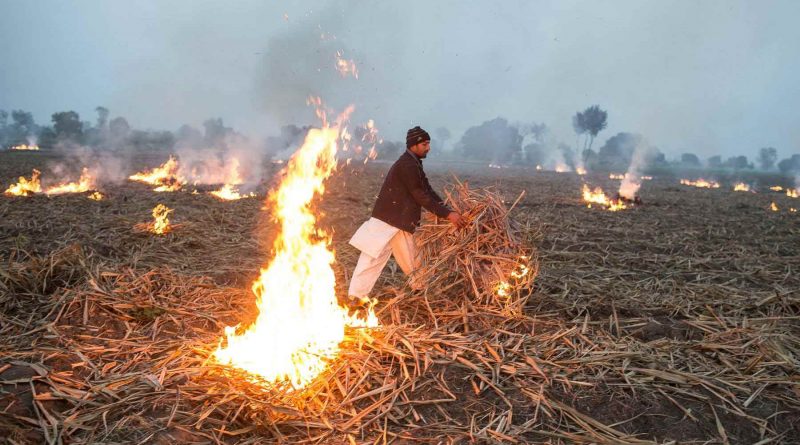Let the Earth Breathe!
There is no doubt that most of the pollution in Delhi/NCR and around the country, for that matter, is the result of human activity. We need a holistic approach involving energy production, industry, building, and transport sectors, and increased public participation to reduce ambient air pollution…
By Abhigyan/Abhinav
Despite various efforts made by concerned authorities, the air quality of the capital city is still not improving. Increasing number of people suffer from chest congestion or respiratory problems. There is consistent evidence that indoor air pollution increases the risk of chronic obstructive pulmonary disease and of acute respiratory infections in childhood, the most important cause of death among children under 5 years of age in developing countries.
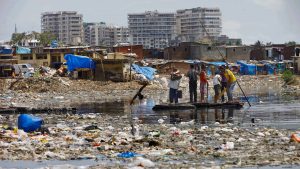 Evidence also exists of associations with low birth weight, increased infant and prenatal mortality, pulmonary tuberculosis, nasopharyngeal and laryngeal cancer, cataract, and, specifically in respect of the use of coal, with lung cancer.
Evidence also exists of associations with low birth weight, increased infant and prenatal mortality, pulmonary tuberculosis, nasopharyngeal and laryngeal cancer, cataract, and, specifically in respect of the use of coal, with lung cancer.
The major causes of the rising pollution levels are: dust from the construction activities in Delhi and National Capital Region (NCR); the burning of stubble in farms of Haryana, Punjab and Rajasthan, the hot mix plant and other energy-producing plants around NCR and industrial pollution in the cities around NCR.
 According to Dr A K Aggarwal, Professor of Excellence and Medical Director (Innovation) Apollo Hospital, New Delhi, exposure to air pollutants is largely beyond the control of individuals and requires action by public authorities at the national, regional and even international levels. The health sector can play a central role in leading a multi-sectoral approach to the prevention of exposure to air pollution. It can engage and support other relevant sectors (transport, housing, energy production and industry) in the development and implementation of long-term policies to reduce the risks of air pollution to health.”
According to Dr A K Aggarwal, Professor of Excellence and Medical Director (Innovation) Apollo Hospital, New Delhi, exposure to air pollutants is largely beyond the control of individuals and requires action by public authorities at the national, regional and even international levels. The health sector can play a central role in leading a multi-sectoral approach to the prevention of exposure to air pollution. It can engage and support other relevant sectors (transport, housing, energy production and industry) in the development and implementation of long-term policies to reduce the risks of air pollution to health.”
Mortality from ischaemic heart disease and stroke are also affected by risk factors such as high blood pressure, unhealthy diet, lack of physical activity, smoking, and household air pollution. Some other risks for childhood pneumonia include suboptimal breastfeeding, underweight, second-hand smoke, and household air pollution. For lung cancer, and chronic obstructive pulmonary disease, active smoking and second-hand tobacco smoke are also main risk factors. These risk factors may contribute to deaths that are caused by ambient air pollution.
 Dr Suneela Garg, Director Professor, Department of Community Medicine, Maulana Azad Medical college, New Delhi, said, “Reducing the public health impacts of ambient air pollution requires addressing the main sources of the air pollution, including inefficient fossil fuel combustion from motor vehicle transport, power generation and improving energy efficiency in homes, buildings and manufacturing. Individuals can contribute to improving air quality by choosing cleaner options for transport or energy production.”
Dr Suneela Garg, Director Professor, Department of Community Medicine, Maulana Azad Medical college, New Delhi, said, “Reducing the public health impacts of ambient air pollution requires addressing the main sources of the air pollution, including inefficient fossil fuel combustion from motor vehicle transport, power generation and improving energy efficiency in homes, buildings and manufacturing. Individuals can contribute to improving air quality by choosing cleaner options for transport or energy production.”
Dr Anup Mohta, Director, Chacha Nehru Bal Chikitsalaya, East Delhi, said, “The public health sector can play a leading role in adopting a multispectral approach to prevention of exposure to ambient air pollution by engaging with and supporting the work of other sectors (i.e. transport, housing, energy, industry) to develop and implement long-term policies and programs aimed to reduce air pollution and improve health. Indoor air pollution is a major global public health threat requiring greatly increased efforts in the areas of research and policy-making. Research on its health effects should be strengthened, particularly in relation to tuberculosis and acute lower respiratory infections.”
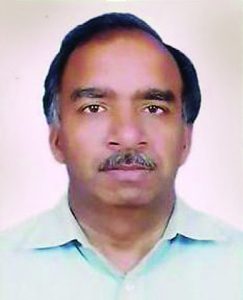 Delhi and NCR have got engulfed by toxic smog with pollution levels breaching permissible standard limits multiple times. The Air Quality Index in many parts of the city slipped into the category of ‘severe’ with a score of 448 on a scale of 500 against the permissible limit of 100 micrograms per cubic metre. The doctors declared the condition as public health crisis. And after many deliberations, discussions and blame game among political leaders, steps were announced to take on Delhi pollution.
Delhi and NCR have got engulfed by toxic smog with pollution levels breaching permissible standard limits multiple times. The Air Quality Index in many parts of the city slipped into the category of ‘severe’ with a score of 448 on a scale of 500 against the permissible limit of 100 micrograms per cubic metre. The doctors declared the condition as public health crisis. And after many deliberations, discussions and blame game among political leaders, steps were announced to take on Delhi pollution.
Delhi and the cities of the neigbhouring states, including Haryana, Punjab and Uttar Pradesh have been under constant cover of the pollution-laden smog. With pollution levels recorded as ‘severe’, some specific areas have emerged as the pollution hotspots in Delhi and NCR.
There is also no debate that pollution has caused drastic changes to the environment and it continues to harm water. Some pollution can be traced to a specific location, but some of it is called nonpoint source pollution and this type of pollution is where we, as an individual, can make an immediate difference.
As per report, capital city Delhi/NCR is the 11th-most polluted city by particulate matter concentration (122 PM2.5). Anand Vihar, Bhiwadi, Noida and Ghaziabad are hotspots under the Environment Pollution Control Authority (EPCA) scanner. The EPCA recently directed the Delhi-NCR authorities to draw up a time-bound action plan to clean up the air of these hotspots.
While Anand Vihar in east Delhi has consistently recorded alarming levels of pollution, Bhiwadi, an industrial area in Rajasthan’s Alwar district, has emerged as one of the most polluted zones of the country in recent times. Recently the Air Quality Index for Ghaziabad was recorded at 499 on a scale of 500.
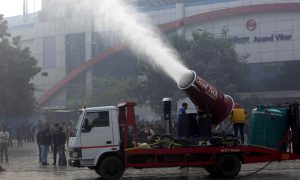 How to reduce pollution
How to reduce pollution
Each person has the ability to reduce the amount of pollution that humans create. Nonpoint source doesn’t mean it appeared from nowhere. On the contrary, it means the pollution originated from a large number of small sources or a large land area concentrated in rivers and streams. This is often the case with runoff from streets or agricultural fields. Every individual, of any age, can positively reduce pollution.
We drink water from wells and aquifers, all of it is pumped from the ground to the places we need it. The water that we all pollute drains into the groundwater. Maintaining a healthy environment for all creatures is also a great reason for following these simple steps. The many species of plants and animals also will be healthier with fewer pollutants in their habitat.
Generation of excessive waste from our society is a problem. It is best to have one water bottle that you refill rather than using disposable bottles that end up in the trash, on the street, and in a landfill, or possibly floating down a river, in a lake, or in the ocean.
A variety of pollutants and detergents are rinsed from your vehicle during washing. By parking your car on the lawn the plants in your lawn can limit the amount of these pollutants that enter into the street drain and then to streams and lakes. Plants will uptake the chemicals and reduce the pollutants that make it to the streams.
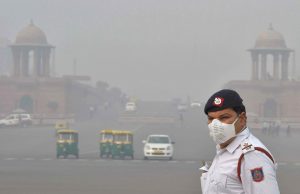 Hazardous chemicals include cleaners, paints, and many other often used chemicals. The idea that the chemical will be diluted and won’t be a problem is false. Drains are not for disposing of liquid garbage. These items are probably the most important to store, use, and dispose of properly. Used motor oil can be recycled and needs to be taken to a proper location. Dumping oil down a drain is never a solution. Some auto shops and filling stations will recycle used motor oil.
Hazardous chemicals include cleaners, paints, and many other often used chemicals. The idea that the chemical will be diluted and won’t be a problem is false. Drains are not for disposing of liquid garbage. These items are probably the most important to store, use, and dispose of properly. Used motor oil can be recycled and needs to be taken to a proper location. Dumping oil down a drain is never a solution. Some auto shops and filling stations will recycle used motor oil.
This three-tier system is the best way to reduce waste. First reduce the amount of items you consume especially things that can be replaced with something reusable, like washcloth instead of paper towel. Second, always reuse items rather than use disposable. Anything you do can help, you don’t have to make every change at once. Lastly, recycle. If it is something you have to dispose of, recycle what you can. All of this will reduce the amount you pollute and should also leave a few more dollars in your pocket as well.
The best way to reduce emissions of vehicle is to make sure it is working properly and not leaking any chemicals like oil or anti-freeze. The test is to see if there are spots left on the pavement after your car has been setting there overnight. These chemicals should only be used when needed. There is no reason to spray a lawn or garden if there is no known issue that you are taking care of specifically. Use a soil test and use fertilizers, herbicides, and insecticides only if there is a presence of the issue. In a small garden, hoeing can often be done more quickly than herbicide application.
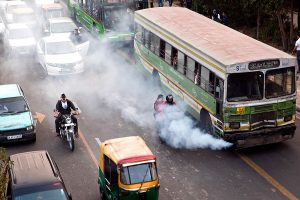 A compost pile can decompose leaves, grass clippings, and food waste into a great fertilizer for your home garden. It is also just a way to reduce the amount of waste material from the lawn, leaves, and garden. A compost pile doesn’t have to be a big hassle and doesn’t have to smell badly. The truth is a compost pile, that is turned regularly, is a necessary part of a home yard or garden.
A compost pile can decompose leaves, grass clippings, and food waste into a great fertilizer for your home garden. It is also just a way to reduce the amount of waste material from the lawn, leaves, and garden. A compost pile doesn’t have to be a big hassle and doesn’t have to smell badly. The truth is a compost pile, that is turned regularly, is a necessary part of a home yard or garden.
Action Plan to curb pollution
Double Helical takes a look at the plan, how it will be implemented over the next months, the roles of agencies and their preparedness, what NCR cities are doing to implement it and how you can make a difference with people’s suggestions and complaints.
The Central Pollution Control Board (CPCB) will monitor air quality from various stations located across Delhi-NCR. Daily reports will be sent to the Environment Pollution Control Authority (EPCA), the implementing authority of the plan, which will take a decision on the future course of action. If data of any station shows a sudden spike in pollution level, a team will rush to the spot and try to analyse the reason. Accordingly, action would be taken and instructions issued.
 The CPCB has directed all state pollution control boards of NCR states to form teams that will fan out and flag violations. The CPCB has formed around 40 teams that are visiting various parts of Delhi alone. The transport department is checking buses entering the three inter-state bus terminals for valid pollution under control papers and penalising violators.
The CPCB has directed all state pollution control boards of NCR states to form teams that will fan out and flag violations. The CPCB has formed around 40 teams that are visiting various parts of Delhi alone. The transport department is checking buses entering the three inter-state bus terminals for valid pollution under control papers and penalising violators.
A special campaign will be launched after Diwali to randomly check commercial vehicles in the city. The officials will check if PUC centres are operating properly. Buses on some routes with low ridership could be diverted to cater to busy stretches.
Various factors put together are contributing to the rising pollution levels in these hotspots, alarmingly. There are areas that do not have a single toilet or urinal, resembled an “open air latrine”. Various city authorities as well as state governments are now taking up steps to curb the rising toxic levels in the air of these pollution hotspots, which are also the prominent real estate hotspots of Delhi-NCR.
Some of the key steps are being taking up. The Greater Noida Industrial Development Authority (GNIDA), already started an anti-pollution drive. Under the drive, the GNIDA has divided the city into five zones and formed teams to penalise the ones flouting the green norms set by the National Green Tribunal (NGT). It also urged people to complain if they witness someone flouting the norms. The penalty set by the GNIDA ranges between Rs 5,000 and Rs 500,000 depending on the severity of the violation. The Uttar Pradesh Pollution Control Board (UPPCB) recently ordered the suspension of work in 123 industrial units, including eight sugar mills, especially in the NCR region. Further, the UPPCB also fined around 200 vehicles for violating pollution control norms.
The UPPCB pollution board ordered the shutdown of production in more factories. The total number of factories where production has been suspended stands at 315. The Noida Authority, after being pulled up by the NGT, conducted a surprise inspection of ten work circles. The authority levied fines amounting to Rs 31 lakh in a day from those who flouted the green norms laid down by the NGT.
Sprinkling of water has been taken up by almost all the civic authorities. This will help curb dust pollution, one of the major causes of the smog in the NCR. The NGT also took some steps and banned the construction and industrial activities and entry of trucks in the national capital. The authority has directed the state governments of Uttar Pradesh, Punjab, Rajasthan and Haryana to ensure that no crop stubble is burnt, adding to the rising pollution levels.
In a suggestion from Bhure Lal, chairman, EPCA, around 900 buses belonging to the Uttar Pradesh State Transport Corporation operating in Delhi can use the bus terminal of UP, which has ample space and is located close to the Anand Vihar ISBT. While no hotspot is in Haryana, steps taken by the state government will help bring down the pollution levels in these areas. Some of the leading cases of stubble burning have been reported from this state. To curb this, the Haryana government has taken strict actions against farmers burning stubble.
As per a report, many families with elderly members ailing from respiratory illnesses have installed oxygen cylinders at home for emergency purposes because they can’t keep running to the hospital for every frequent breathing crisis that arises. The medical practitioners feel that the problem needs the attention of not just a single man, but of an entire system, whose combined effort must be to make whole capital city’s air breathable again.
Kuldeep Tyagi, a social worker, said, “It is important to know how we will reduce the number of cars in circulation in a large city; reduce ambient air pollution and benefit public health and well-being. Although newer motor vehicles have more efficient engines and are using cleaner fuels, the absolute number of vehicles is still increasing in many cities worldwide, and so are levels of ambient air pollution in many urban regions.”
For example, in parts of Europe where stricter standards and regulations for vehicles have been enforced, ambient air pollution levels are stable or continue to rise. Per kilometer of travel, diesel vehicles also typically emit more particulate emissions than gasoline, gas-powered, or electric vehicles of comparable size and age so that increased reliance on diesel vehicles in the vehicle fleet may be a contributing factor to health-harmful air pollution in many cities.
Diesel emissions have also been defined by WHO’s International Agency for Research on Cancer as a carcinogen. Building cities around rapid public transport systems, complemented by dedicated walking and cycling networks, is more fuel efficient, in terms of transport. This also tends to facilitate a “virtuous cycle” of more compact cities, more energy efficient housing, fewer private car trips, and thus fewer air pollution emissions overall. This helps minimize the health burden from ambient air pollution – as well as encourage healthful active transport on safe walking and cycling networks, where people are at less risk of traffic injury.

